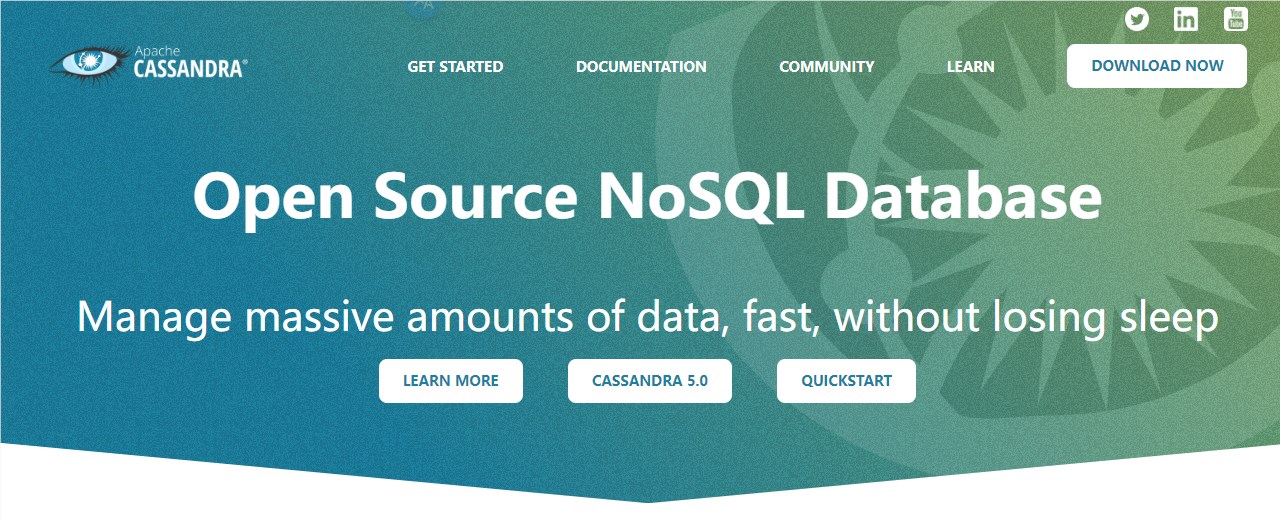Apache Cassandra 5.0 is officially released, bringing a series of impressive upgrades that significantly improve the performance and functionality of the database. This update not only optimizes data efficiency, but more importantly introduces generative AI capabilities and enhances the ability to manage large-scale data. For enterprise users looking to reduce operating costs and increase data processing speed in large deployments, Cassandra 5.0 is definitely a major version upgrade worth paying attention to.
The Apache Cassandra community recently announced that Cassandra 5.0 has been officially released. This update not only improves data efficiency, but also adds generative AI (GenAI) functionality and optimized performance. As a distributed open source NoSQL database, Cassandra can manage large-scale data across multiple servers to ensure high availability and fault tolerance.

Version Cassandra 5.0 brings significant improvements, the most notable of which is the new Storage Attached Index (SAI) feature. In the past, users needed to strictly define data, but now, developers can query more flexibly without being limited to fixed data structures. This means that queries for non-primary keys become more efficient, and the use of secondary indexes becomes simpler, reducing the system burden.
In addition, Cassandra 5.0 also expands the functionality of the database, adding vector search (Vector Search) and new vector data types. These capabilities are critical for AI and machine learning projects, allowing for better similarity, storage, and retrieval of embedding vectors to improve recommendation engines, fraud detection, image recognition, and AI chatbots.
The update also introduces a unified compression strategy, which greatly increases the data density of each node. Compared with the previous maximum support of four TB per node, the current Cassandra5.0 can support ten TB or more. This improvement allows enterprise users to reduce the number of nodes in large-scale deployments, thereby reducing operating costs.
In addition, Cassandra 5.0 introduces a pair of new data structures, called trie memtables and trie SSTables. These structures better connect user-entered data with disk storage, reducing unnecessary processing and conversion time, making Extract data from memory or disk faster and more efficiently.
This release is the first major upgrade since the launch of Cassandra 4.0 in 2021. Since then, the Apache Cassandra community has focused on the development of 5.0, introducing a series of new features and capabilities to improve its performance and usability. Users can migrate from version 4.0 to 5.0 through online upgrade to minimize application downtime. With the launch of Cassandra 5.0, the life cycle of the 3.x series has also come to an end. Users need to plan an upgrade strategy as soon as possible to ensure continued support and security updates.
In the future, the Cassandra community will continue to promote the development of version 5.1, which is expected to implement complete ACID (atomicity, consistency, isolation, durability) transactions to expand the applicability of the database in new use cases.
Highlight:
Added Storage Attached Index (SAI) function to make queries more flexible and efficient.
Introducing vector search and new vector data types to power AI and machine learning projects.
? The data capacity of each node is increased to 10TB, reducing the company's operating costs.
All in all, the release of Cassandra 5.0 brings new possibilities for large-scale data management and AI applications. Its improved functionality and enhanced performance will help enterprises better address data challenges and drive further development of AI technology. It is recommended that users understand and plan an upgrade strategy as soon as possible to take full advantage of Cassandra 5.0.